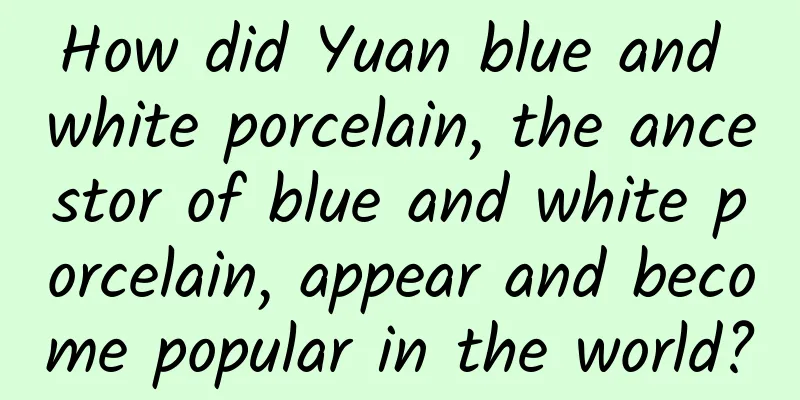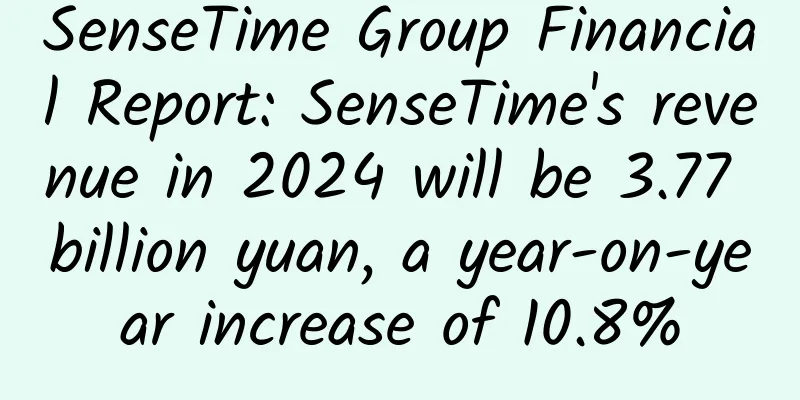How did Yuan blue and white porcelain, the ancestor of blue and white porcelain, appear and become popular in the world?

|
The Yuan blue and white double-handled small jar is 6-7 cm high, with a straight mouth, short neck, round shoulders, and blue and white chrysanthemum branch decoration on the abdomen. The painting technique is naive and delicate, and the characteristics of the era are distinct. During the Yuan Dynasty, the post roads were unobstructed and cultural exchanges between Europe and Asia became more frequent. A large number of pottery craftsmen from West Asia entered China and brought with them the blue and white colorant, Sumaliqing, which contained a large amount of cobalt ore, creating conditions for the production of Yuan blue and white porcelain. During the same period, the Yuan government established management agencies such as the General Works Institute according to different handicraft industries. "Yuan History·Baiguan Zhi" records that "Fuliang Ceramic Bureau, with a rank of ninth rank, was established in the 15th year of Zhiyuan (1278). It is responsible for firing porcelain, and lacquering horsetails, rattan hats, etc." Fuliang Ceramic Bureau is a unit under the General Works Institute. When porcelain is needed as a sacrificial vessel, the Yuan court needs to summon skilled kiln workers to fire porcelain, and the Fuliang Ceramic Bureau was born. In addition, the Yuan court also opened official handicraft workshops to directly engage in manual production, laying a solid foundation for the production of Yuan blue and white porcelain. (Blue and white pheasant, bamboo, rock, flower and fruit pattern plate, height 7.6 cm, diameter 46 cm, foot diameter 27 cm, collected by the Victoria and Albert Museum in the UK, picture from the Internet) The emergence of Yuan blue and white porcelain is based on the increasingly advanced firing technology of Jingdezhen blue-white porcelain and the evolution of Shufu porcelain. Jiang Qi, a Yuan Dynasty man, said in "Tao Ji": "There were more than 300 Jingdezhen pottery in the past, and the pottery was pure white without flaws, so it was sold to other places and was known as Raoyu." The blue-white porcelain fired in the Yuan Dynasty was blue-white in the early period, and the glaze was blue or white in the late period. The maturity of the firing technology of Jingdezhen blue-white porcelain and Shufu porcelain provided technical guarantee for the emergence of blue-white porcelain. In addition, the main color of Yuan blue-white porcelain is blue and white, and the Mongolians prefer white and blue. "Yuanshi·Sacrifice 1·Suburban Sacrifice" records: "Yuan Xingshuo, there is a ceremony of worshiping the sky, the clothes and hats are of quality, the sacrificial utensils are pure, and the emperor and empress are close to it." As a multi-ethnic regime, the Yuan Dynasty brought geographical convenience for the exchange between the East and the West, accelerated the exchange and integration between different cultures, and the Chinese traditional culture and a variety of foreign cultures and religions influenced and penetrated each other, forming a cultural pattern of coexistence of multiple cultures. As one of the important carriers of the material culture of the Yuan Dynasty, Yuan Dynasty porcelain is a direct reflection of the cultural exchange between China and the West. It not only inherited the shape and production technology of the vessels since the Tang and Song Dynasties, but also integrated the Islamic cultural factors, Mongolian grassland cultural factors and Tibetan Buddhist cultural factors, giving birth to a large number of vessel shapes, patterns and decorative techniques. The decorative technology of Yuan blue and white porcelain inherited the underglaze painting technology of Cizhou Kiln and Jizhou Kiln, and the shape of the vessel was borrowed from the living utensils of nomadic peoples. The decoration used a lot of Islamic culture and Tibetan Buddhist cultural elements, reflecting the extremely high multicultural value. The blue and white porcelain in the late Yuan Dynasty was influenced by Yuan opera and Yuan drama, especially some traditional Central Plains cultural themes, which were widely used in blue and white decoration. It can be seen that the Central Plains art, Mongolian grassland art and Islamic art have completed a deep integration and development in Yuan blue and white porcelain. ( Jingdezhen kiln blue and white mandarin duck lotus ("Man Chi Jiao") pattern plate , Yuan Dynasty, height 7.3cm, diameter 46.4cm, foot diameter 29.8cm, collected by the Palace Museum, picture from the Internet) The emergence of Yuan blue and white porcelain marks the transition of Chinese ceramics from plain porcelain to colored porcelain, and its rich patterns give Chinese ceramics decorative functions. From the middle and late Yuan Dynasty, my country gradually mastered the technology of using cobalt materials to paint on ceramics, which has very important historical significance. References Liu Ting. On the background factors of the production of Yuan blue and white porcelain - taking the Zhizheng type Yuan blue and white porcelain as an example [J], Cultural Relics Appraisal and Appreciation, Issue 12, 2020 Wu Ping, Li Feng. On the characteristics and aesthetic features of blue and white decoration in the Yuan Dynasty [J], Art Review, No. 1, 2015 |
<<: Why does China's most festive fruit unify the winters of the north and south?
>>: The New Year is full of flavor. Teach you how to cook perfect dumplings
Recommend
SAIC Passenger Vehicle’s new energy vehicle sales in October reached 13,646 units, a year-on-year increase of 196.3%!
Recently, the State Council officially released t...
2022 National Regulations on Rent Reductions Due to the Epidemic: Some businesses in medium and high-risk areas will be exempted from half a year’s rent!
Recently, affected by the epidemic, merchants in s...
China's 5G mobile phone sales ranking: Huawei is still the first, Xiaomi is overtaken
Although Xiaomi is not as good as Apple in the do...
A 2-year-old child with influenza A was taken to a yoga studio for enema treatment, but the condition got worse the more he was treated! The truth behind this...
gossip "Can influenza A be treated through b...
Google introduces new biometric authentication API for Android P
Google is looking to improve biometrics in its up...
After a person is buried, where do the atoms that make up his body go?
"It rains heavily during the Qingming Festiv...
WeChat can also perform performance testing & clean up space, and experience the new features in detail
WeChat avatar performance testing tool What? WeCh...
Wang Zheng's "Gestalt Psychotherapy" 60 lessons, from entry to mastery
Training course video content introduction: This ...
Our story in Lost on Journey·ET Tribe
[[182181]]...
China's "King of Deserts" is covered in snow, and netizens are furious to find out the truth...
Recently, the Taklimakan Desert in Xinjiang welco...
What is the Alipay customer service phone number? How to transfer to a human operator via Alipay customer service phone number?
Currently, Alipay is one of the most mainstream m...
Well-known singers are reported to be infected! About one-third of the population may be sick, and doing this can prevent it
On the evening of June 28, in the eighth episode ...
Exclusive in-depth exploration of oCPC optimization logic and breakthroughs
Optimizing oCPC is a necessary and likely long-te...
Apple App Store’s latest review rules in June! It is said that everything has changed!
After the WWDC2016 conference, Apple released fou...









